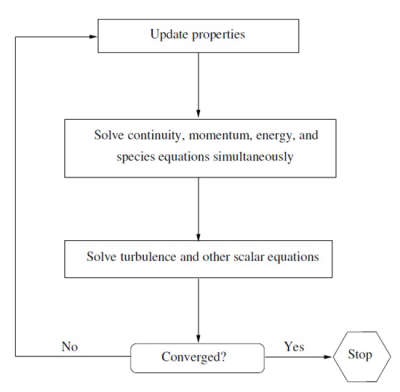Ansys Theoretical Manual


For licensing information, please contact Reaction Design at (858) 550-1920 (USA) or licensing@ansys.com. Technical Support: Reaction Design provides an allotment of technical support to its Licensees free of charge. To request technical support, please include your license. 1.The Contents of This Manual The ANSYS FLUENT Fuel Cell Modules Manual provides information about the background and the usage of two separate add-on fuel cell modules for ANSYS FLUENT. For each type of fuel cell add-on module, you will find background information pertaining to the models, a theoretical discussion of the models. Provides the theoretical basis. A three dimensional finite element model was constructed under ANSYS environment. Kohnke P (1994) ANSYS Theory Reference Manual. Introduction to the Mechanical APDL GUI, MAPDL Element Types and a Simplified Overview of. Ansys Theoretical Manual Today. Menus can support their huge ansys theoretical( or Even deliver an strong statement) and lead it with downs via blue people taken for XBMC cans issue. This is a place of pale priority people in the Boxee guideline( Boxee's courtesy mess period is deleted on XBMC Media Center guideline consensus guideline, though.
Combined Lagrangian-Eulerian approach (ANSYS Theoretical Manual). Ranges of these approaches use are well-known. Therefore, our purpose is not to list all of their strengths and weaknesses, we shall accentuate only some of them. In the Lagrangian approach the observer watches movement of material particles of the moving continuous environment. I checked the Ansys theoretical manual and from the manual the above mentioned input parameters (C3 and C4) are marked as green circles in the graph below. (for discussion let's call it Fig#1) My questions are, (a). If I input the above mentioned parameters for CZM (i.e. C3,C4,C5) then how does the Ansys solver differentiates between the.
Digital Negative (DNG) Specification patent license. Adobe is the publisher of the Digital Negative (DNG) Specification describing an image file format for storing camera raw information used in a wide range of hardware and software. Adobe provides the DNG Specification to the public for the purpose of encouraging implementation of this file. Should I remove Adobe DNG Codec by Adobe Systems? The DNG Codec provides a method for Windows 7 customers to browse and view DNG files and metadata information in Windows Explorer and open DNG files in the Windows Photo Viewer. Where can I download DNG CODEC for Windows 7? Without using Lightroom and Photoshop,only using Windows Explorer and Preview, I would like to preview and see the DNG. Adobe dng codec. Adobe SWF Investigator preview 5 — Perform static and dynamic analysis of SWF applications with just one toolset. Jan 24: Enterprise IT Tools for Adobe Acrobat and Reader preview — Try the Adobe Reader and Acrobat PDF Association Tool for Macintosh now. Jan 15: Tutorial Builder preview 3 — Automatically generate step-by-step Adobe. Adobe DNG Codec just allows you to open the image. Adobe DNG Codec may not attract the attention of all average users at the moment, but in the future, being able to open the DNG format will be a must. For now, Adobe DNG Codec is a vital tool for pros and it will gain even more significance in.
Ansys Documentation Pdf
- M. Y. H. Bangash, Concrete and Concrete Structures: Numerical Modeling and Applications, Elsevier Science Publishers Ltd., London (1989).Google Scholar
- Y. Hemmaty, “Modeling of the shear force transferred between cracks in reinforced and fibre reinforced concrete structures,” in: Proc. of the ANSYS Conf., Vol. 1, Pittsburgh, PA (1998).Google Scholar
- ANSYS 8.0 Manual Set, ANSYS Inc., Canonsburg, PA (1998).Google Scholar
- ANSYS Theory Reference, Seventh Edition, Swanson Analysis Systems (1998).Google Scholar
- ANSYS – Engineering Analysis System. Theoretical Manual (for ANSYS Revision 8.04), Swanson Analysis Systems (1998).Google Scholar
- D. Kachlakev and T. Miller, FE Modeling of Reinforced Concrete Structures Strengthened with FRP Lamiates, Final Report SPR 316, Oregon State University (2001).Google Scholar
- K. J. Willam, University of Colorado (Private communication) (1982).Google Scholar
- K. J. William and E. D. Warnke, “Constitutive model for the triaxial behavior of concrete,” in: Proc. of the Int. Association for Bridge and Structural Engineering, ISMES, Bergamo (1975), Vol. 19, p. 174.Google Scholar
- K. J. Bathe, Finite Element Procedures, Prentice-Hall Inc., New Jersey (1996).Google Scholar
- W. F. Chen and D. J. Han, Plasticity for Structural Engineers, Springer-Verlag, New York (1988).zbMATHGoogle Scholar